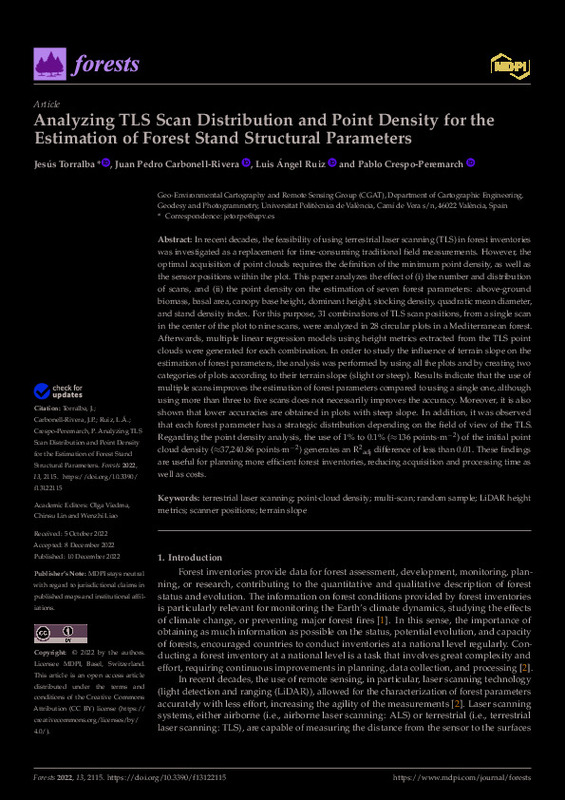JavaScript is disabled for your browser. Some features of this site may not work without it.
Buscar en RiuNet
Listar
Mi cuenta
Estadísticas
Ayuda RiuNet
Admin. UPV
Analyzing TLS Scan Distribution and Point Density for the Estimation of Forest Stand Structural Parameters
Mostrar el registro completo del ítem
Torralba, J.; Carbonell-Rivera, JP.; Ruiz Fernández, LÁ.; Crespo-Peremarch, P. (2022). Analyzing TLS Scan Distribution and Point Density for the Estimation of Forest Stand Structural Parameters. Forests. 13(12):1-22. https://doi.org/10.3390/f13122115
Por favor, use este identificador para citar o enlazar este ítem: http://hdl.handle.net/10251/193573
Ficheros en el ítem
Metadatos del ítem
| Título: | Analyzing TLS Scan Distribution and Point Density for the Estimation of Forest Stand Structural Parameters | |
| Autor: | ||
| Entidad UPV: |
|
|
| Fecha difusión: |
|
|
| Resumen: |
[EN] In recent decades, the feasibility of using terrestrial laser scanning (TLS) in forest inventories was investigated as a replacement for time-consuming traditional field measurements. However, the optimal acquisition ...[+]
|
|
| Palabras clave: |
|
|
| Derechos de uso: | Reconocimiento (by) | |
| Fuente: |
|
|
| DOI: |
|
|
| Editorial: |
|
|
| Versión del editor: | https://doi.org/10.3390/f13122115 | |
| Coste APC: |
|
|
| Código del Proyecto: |
|
|
| Agradecimientos: |
|
|
| Tipo: |
|









